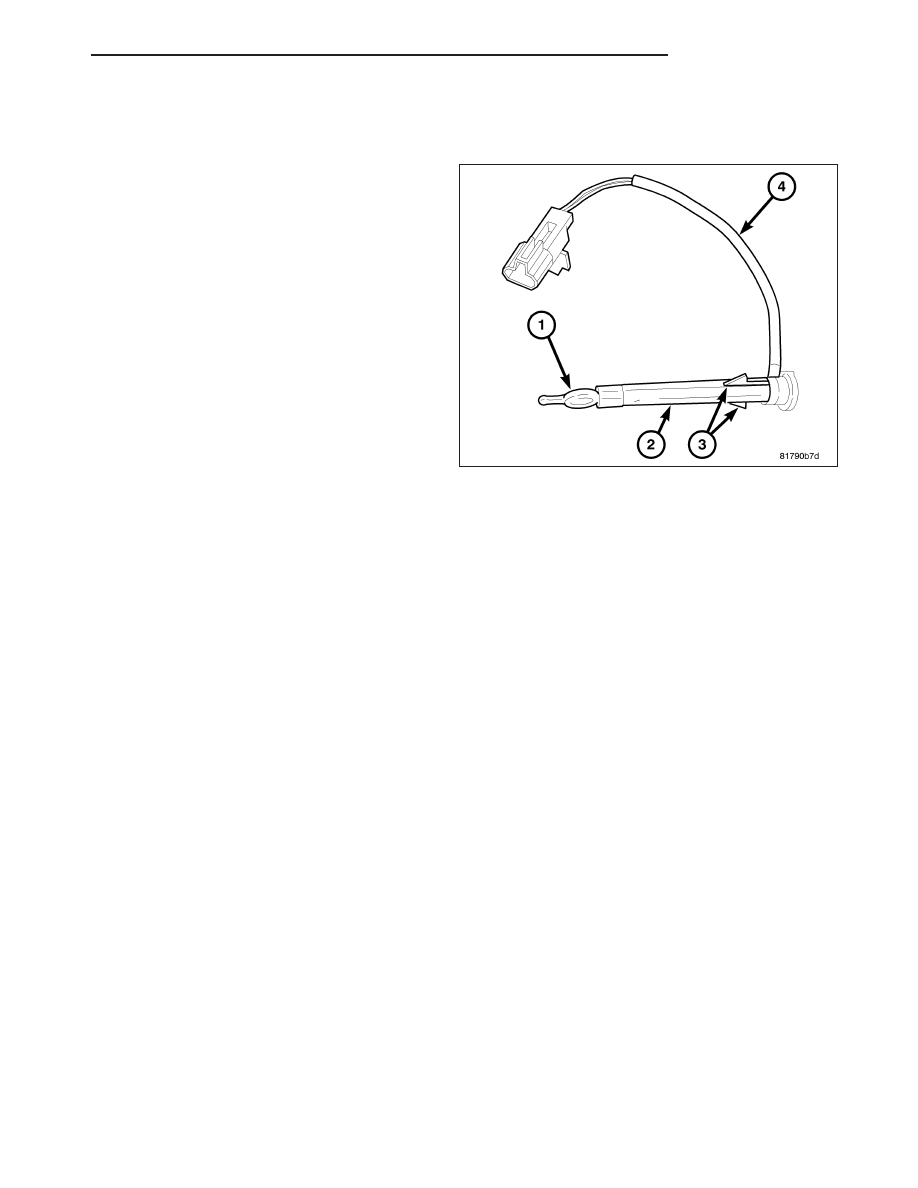Content .. 1412 1413 1414 1415 ..
Dodge Caliber. Manual - part 1414

SENSOR-EVAPORATOR TEMPERATURE
DESCRIPTION
The evaporator temperature sensor measures the
temperature of the conditioned air downstream of the
A/C evaporator. The evaporator temperature sensor is
an electrical thermistor (1) mounted on the end of a
molded plastic housing (2) that is inserted into the
driver side of the HVAC housing near the coldest point
of the A/C evaporator. The evaporator temperature
sensor is retained in the HVAC housing by two integral
retaining tabs (3) and is connected to the vehicle elec-
trical system by use of a wire lead and connector (4)
with two terminals.
OPERATION
The evaporator temperature sensor monitors the surface temperature of A/C evaporator and supplies an input signal
to the A/C-heater control. The A/C-heater control uses the evaporator temperature sensor input signal to optimize
A/C system performance and to protect the A/C system from evaporator freezing. The evaporator temperature sen-
sor will change its internal resistance in response to the temperatures it monitors and is connected to the A/C-heater
control through sensor ground circuit and a 5-volt reference signal circuit. As the temperature of the A/C evaporator
decreases, the internal resistance of the evaporator temperature sensor decreases.
The A/C-heater control uses the monitored voltage reading as an indication of evaporator temperature. The A/C-
heater control is programmed to respond to this input by requesting the powertrain control module (PCM) or the
engine control module (ECM) (depending on engine application) to adjust the compressor swash plate angle as
necessary to optimize A/C system performance and to protect the A/C system from evaporator freezing (refer to 24
- HEATING & AIR CONDITIONING/PLUMBING/COMPRESSOR-A/C - OPERATION for more information).
The evaporator temperature sensor is diagnosed using a scan tool (refer to 24 - HEATING & AIR CONDITIONING
- DIAGNOSIS AND TESTING and to 24 - HVAC Electrical Diagnostics for more information).
The evaporator temperature sensor cannot be adjusted or repaired and, if faulty or damaged, it must be replaced.
REMOVAL
NOTE: LHD model shown. RHD model similar.
PM
CONTROLS
24 - 73